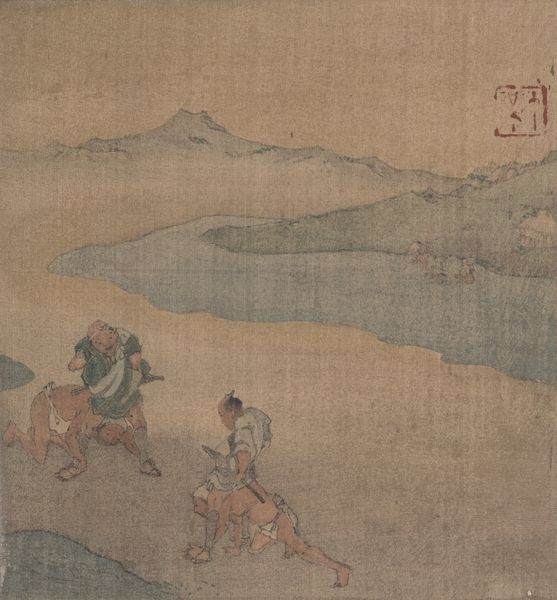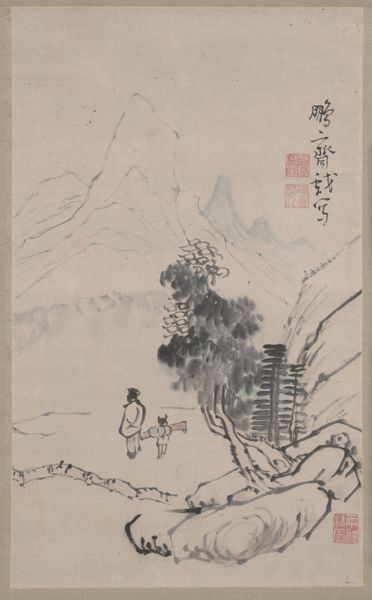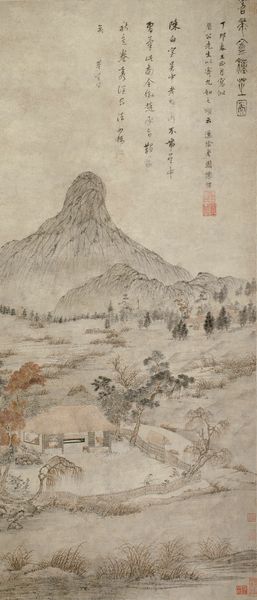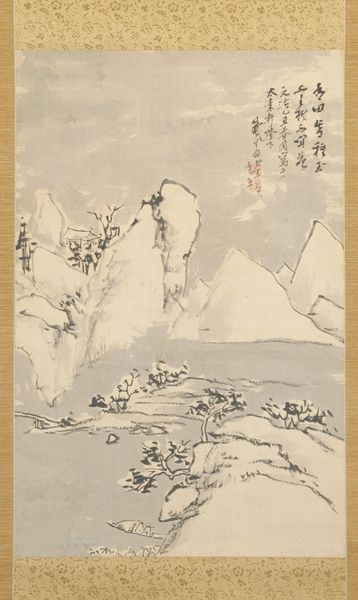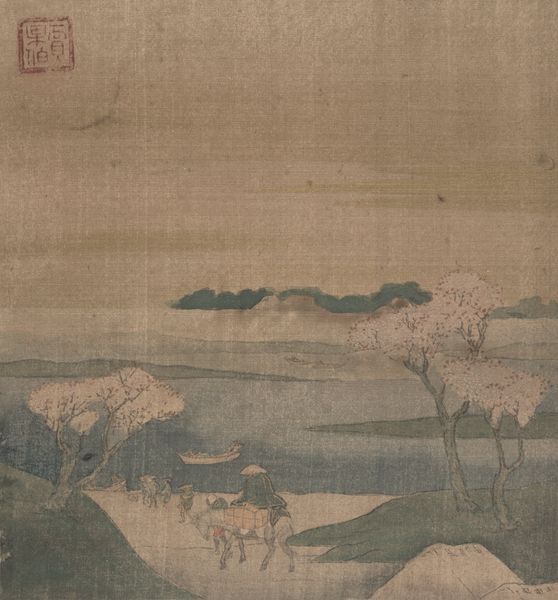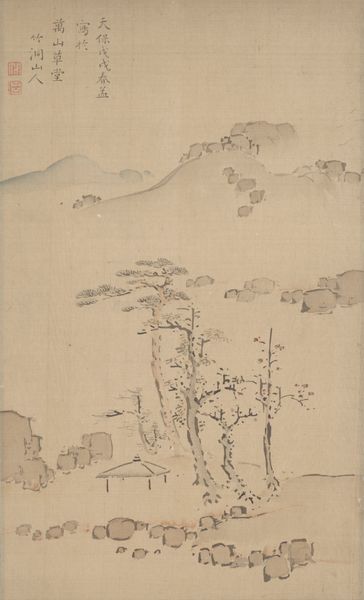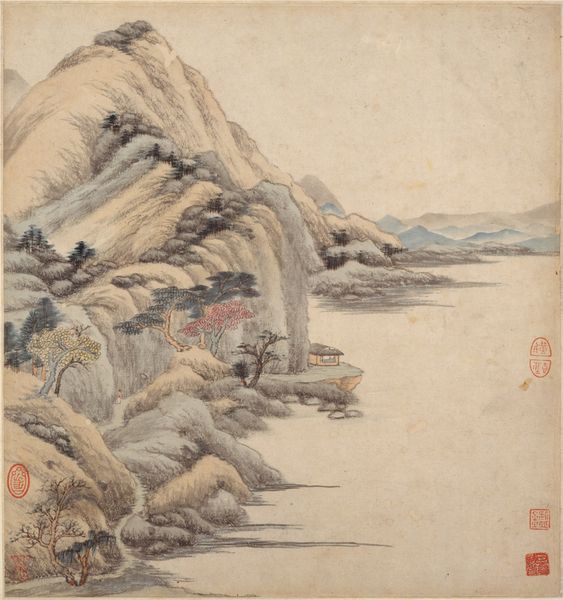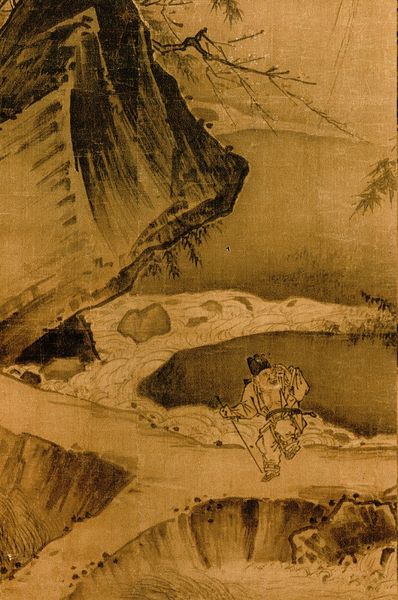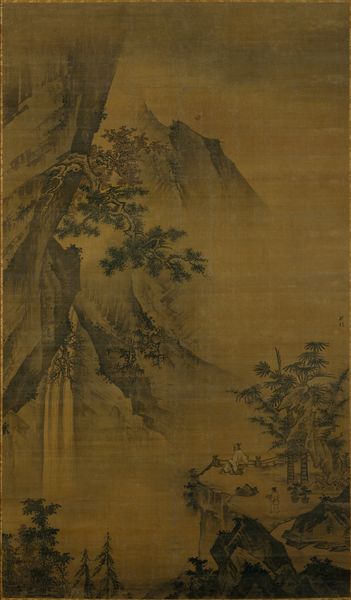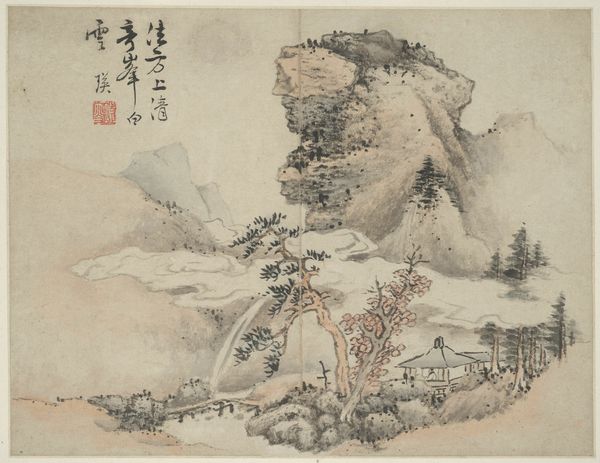
Dimensions: 6 13/16 × 6 3/8 in. (17.3 × 16.19 cm) (image)7 11/16 × 7 1/8 in. (19.53 × 18.1 cm) (mount)
Copyright: Public Domain
Curator: Looking at this 19th-century ink drawing, possibly by Hokei and titled "Scenes from the Tokaido," currently residing at the Minneapolis Institute of Art, I’m immediately struck by its unassuming scale and hushed tones. The light feels incredibly diffuse, almost obscuring the figures. Editor: It’s interesting how the muted colors and seemingly simple composition belie a detailed account of the labor embedded in travel along the Tokaido. Notice the material evidence: worn sandals, bundled goods. This isn’t just a pretty scene; it's documentation of the networks that facilitated trade and cultural exchange, relying on the backs of these travelers. Curator: Structurally, the foreground figures create a clear line of vision toward the implied distance, reinforced by the placement of the torii gate. The repetition of triangular forms, both in the figures' poses and the distant mountains, creates a powerful visual rhythm, tying the immediate with the remote. Editor: Yes, and the tension is interesting. On the one hand, you have this landscape idealized in Ukiyo-e traditions, yet it also presents these anonymous laborers performing what must have been grueling work. Are they glorified, or are they simply fodder for a romantic view of travel? Who would be its potential consumer? Curator: Perhaps both? It could serve to both romanticize travel for the elite while simultaneously reminding them of the infrastructure upon which that leisure depended. The artistic choice of this medium allows us to explore themes relevant today through a close look at the structural harmony, repetition, and direction in a seemingly simple picture. Editor: And how the distribution of this work and similar Ukiyo-e prints fostered cultural homogenization. Think about the production of this imagery—block printing, the organization of labor—all leading to a broader dissemination of cultural narratives, not without ideological consequences. Curator: True. There's a tension between the image's aesthetic appeal and its potential implications for shaping societal perspectives on travel and work in Japan, requiring some further thinking. Editor: Precisely. It shows how unpacking material context and process can significantly alter our view, challenging established aesthetic interpretations and inviting critical considerations on circulation and access.
Comments
No comments
Be the first to comment and join the conversation on the ultimate creative platform.

